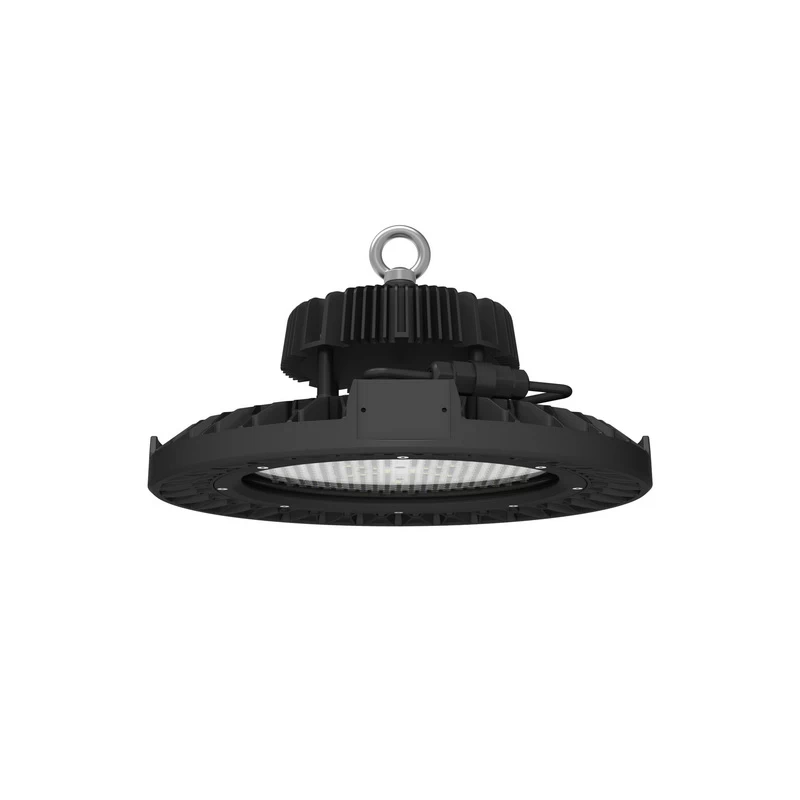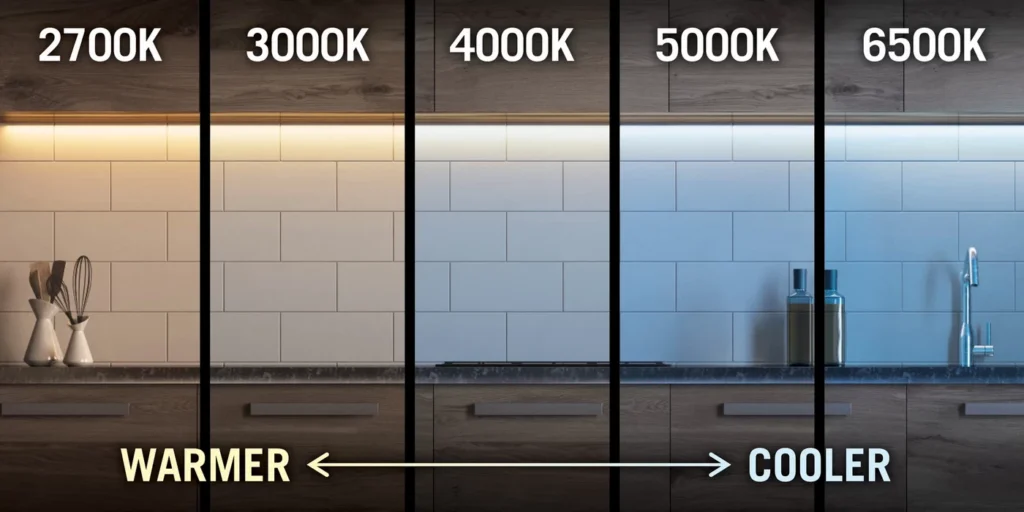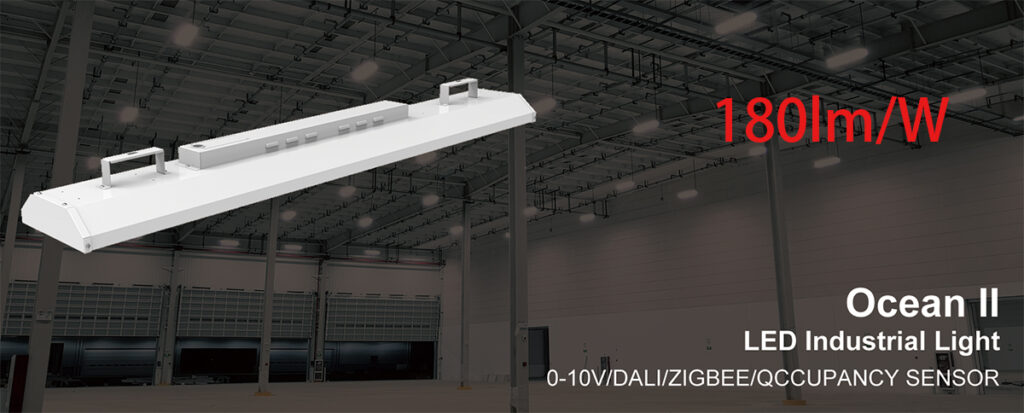Table of Contents
ToggleIntroduction
In certain special lighting environments, such as walk in coolers and freezers, where ambient temperatures are typically as low as -40°C to -20°C, regular LED lights, even high bay or vapor tight LED light, will quickly experience starting difficulties, flickering, brightness reduction, or even complete damage. This is not due to poor fixture quality, but rather because the low-temperature environment has multiple impacts on electronic components, driver power, vapor proof designs, and optical systems. This article will provide an in-depth analysis of this issue.
Walk in Cooler and Freezer Lighting Challenge
To understand why regular LED lights fail in walk-in coolers, we must first recognize the extreme nature of their operating environment. The real challenge is not just the “lower temperature,” but complex environment created by combined effects of low temperature, humidity, airflow, and frequent temperature fluctuations.
- Extremely low temperature (-40°C to +5°C): Performance of various electronic components degrades, and driver power struggles to start normally.
- High humidity and frequent condensation: Frequent door opening and the entry of hot air easily lead to the formation of water droplets or frost.
- Poor air circulation: Weak natural convection makes it difficult for the fixtures to dissipate heat in denser, cold air.
- High requirements for cleaning and corrosion resistance: Cleaning agents commonly used in cold chain and food processing environments are corrosive.
- Thermal stress and mechanical shrinkage: Materials expand and contract during thermal cycles, leading to structural deformation, seal failure, and even breakage at connection points.
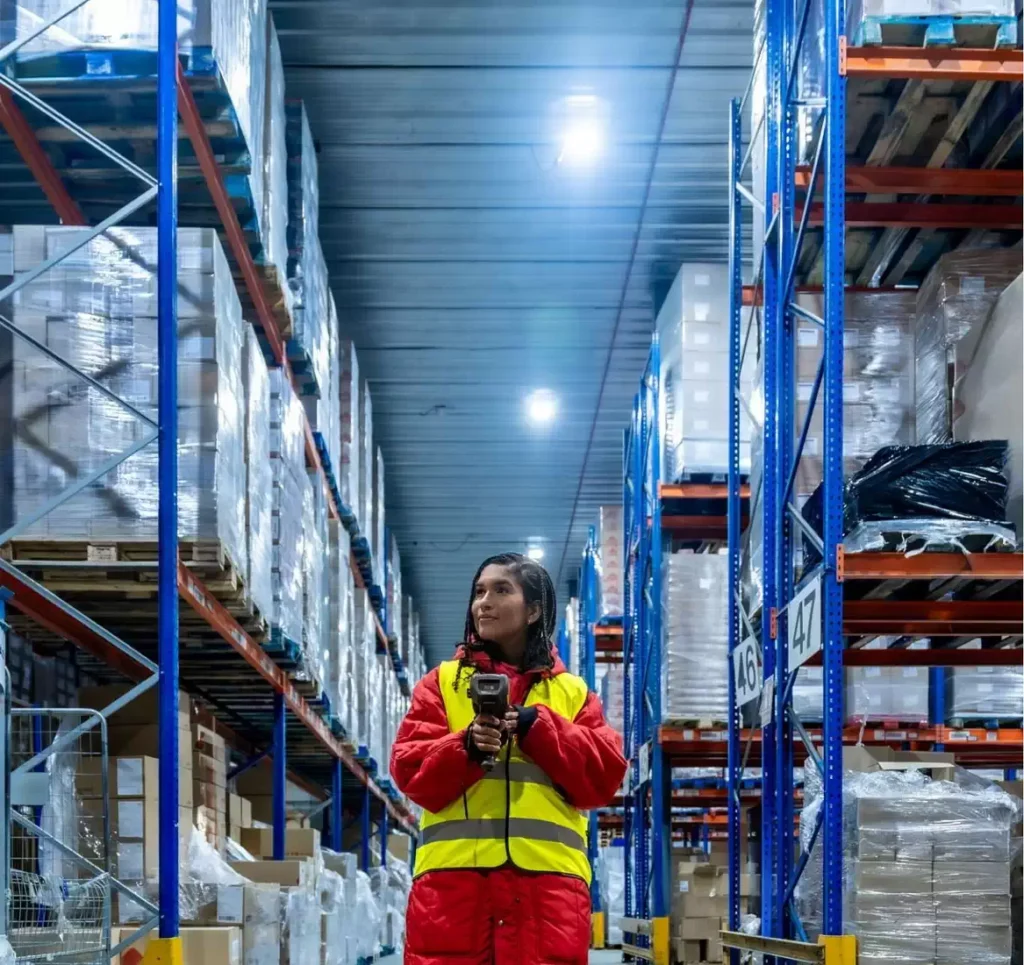
Why can't regular LED lights be used?
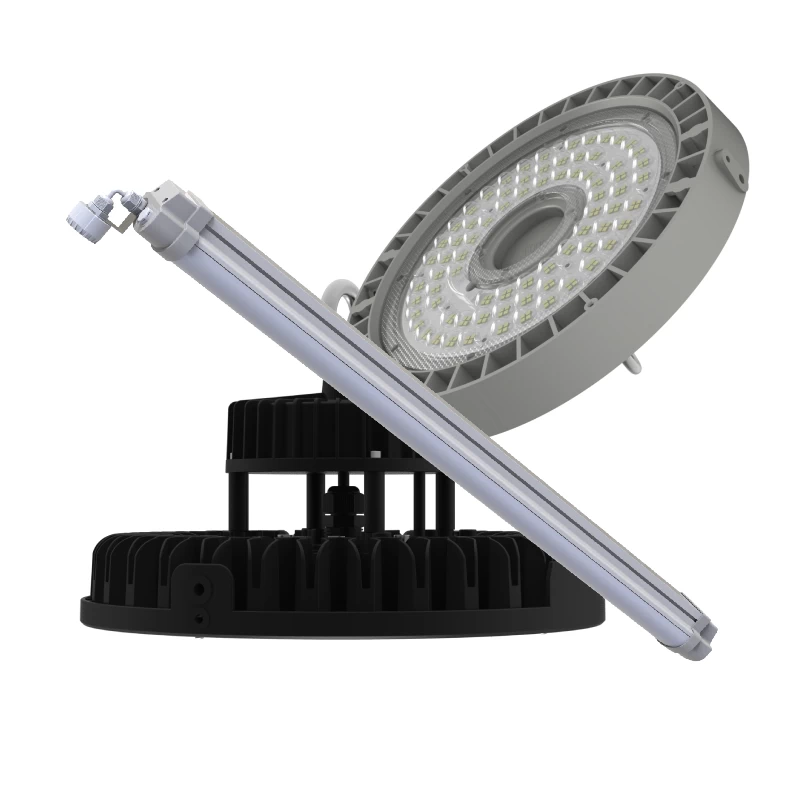
Regular industrial LED lights are designed for illumination in conventional environments, and they cannot guarantee that every system can adapt to the special conditions of walk in cooler and freezer. Their electronic components, circuit thermal management, sealing, and optical systems are simultaneously put to the test. Placing them in cold storage facility is not simply a matter of “shortened lifespan,” but systemic collapse encompassing from physical structure to electrical performance. This leads to safety hazards, energy waste, and increased maintenance costs.
Driver & Capacitor Issues
Many LED drivers heavily utilize electrolytic capacitors and non-low-temperature components. At walk in cooler, the viscosity of their electrolyte increases, causing sharp rise in equivalent series resistance, leading to dramatic drop in capacitance and loss of filtering efficiency. This results in unstable drive output, difficulty starting up, or inability to maintain constant current, manifesting as delayed lighting, flickering, or failure.
Condensation & Frost
When the temperature changes inside the walk-in cooler (during defrosting or opening door), condensation or frost will form on the surface or inside of LED lights if it is not completely sealed. Moisture entering can cause short circuits and corrosion of circuits, and fogging of inner lens can lead to light decay and glare.
Material Embrittlement & Seal Failure
Ordinary plastic casings lose their toughness and become brittle like glass under the sustained low temperatures of walk-in freezer, making them prone to cracking even from minor impacts during transport. Furthermore, silicone seals and adhesives may shrink or lose elasticity, creating gaps that allow moisture and dust to penetrate, posing safety hazard.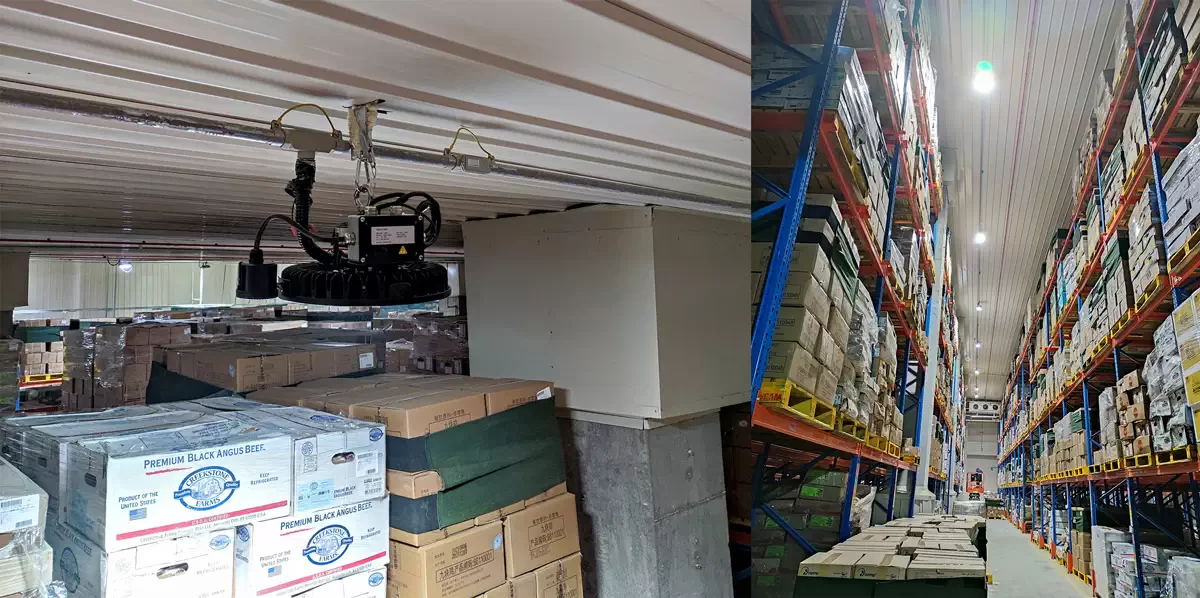
Optical & Color Stability
LED luminous efficiency is also affected by temperature, and ordinary LED chips and phosphors are not optically optimized for low-temperature cold storage. At low temperatures, their luminous flux output may be unstable, and the color temperature may shift significantly (white light turns blue).
Ingress Protection & Hygiene
In high-humidity walk in cooler environments, which may even require regular rinsing, fully sealed system with high waterproof rating (IP66+) is essential, good IK impact resistance rating and corrosion-resistant materials is necessary to ensure operational stability. Ordinary LED lighting fixtures can corrode or become contaminated during cleaning or prolonged exposure to organic/chemical contaminants, affecting compliance and safety.
Junction Temperature
In enclosed cold storage environment, natural convection is very limited, weakening the traditional method of maintaining device junction temperature through heat dissipation. Even when the ambient temperature is very low, the junction temperature (Tj) of LED chip may still be much higher than the ambient temperature. If the heat dissipation design is not optimized for low convection conditions, localized overheating or accelerated degradation may occur.
| Problem | Effect in Cold Environment | Solution |
|---|---|---|
| Driver failure | Hard to start or flicker at low temperature | Use wide-temperature driver components |
| Condensation & frost | Moisture causes short circuit or foggy lens | Use vapor-tight and waterproof design |
| Material cracking | Plastic and seals become brittle | Use low-temperature resistant materials |
| Unstable brightness | Light output or color shifts in cold air | Use LEDs tested for low temperature |
| Water or dust damage | Lamp corrodes or fails after cleaning | Choose IP66/IP69K vapor-tight fixtures |
Overall, the failure of ordinary industrial LED lights in walk-in coolers is not caused by a single factor, but rather by combination of physical and chemical factors. Qualified low-temperature LED lighting fixtures require systematic design and long-term testing in terms of component selection, sealing structure, temperature resistance, and circuit protection.
LEDRHYTHM - Professional LED Lights For Walk in Cooler & Freezer
At LEDRHYTHM, we offer LED lighting products designed for low temperature environments, including high bay and linear vapor tight light types. They offer excellent reliability in both large and small walk-in coolers and freezers, providing long-term, high-efficiency lighting. All our materials and design structures meet low-temperature lighting standards and have undergone long-term operation testing in a -40°C freezer, simulating actual start-stop frequencies and condensation cycles in a walk in cooler, validating their electrical stability and material durability. Learn more about this tested high bay LED here.
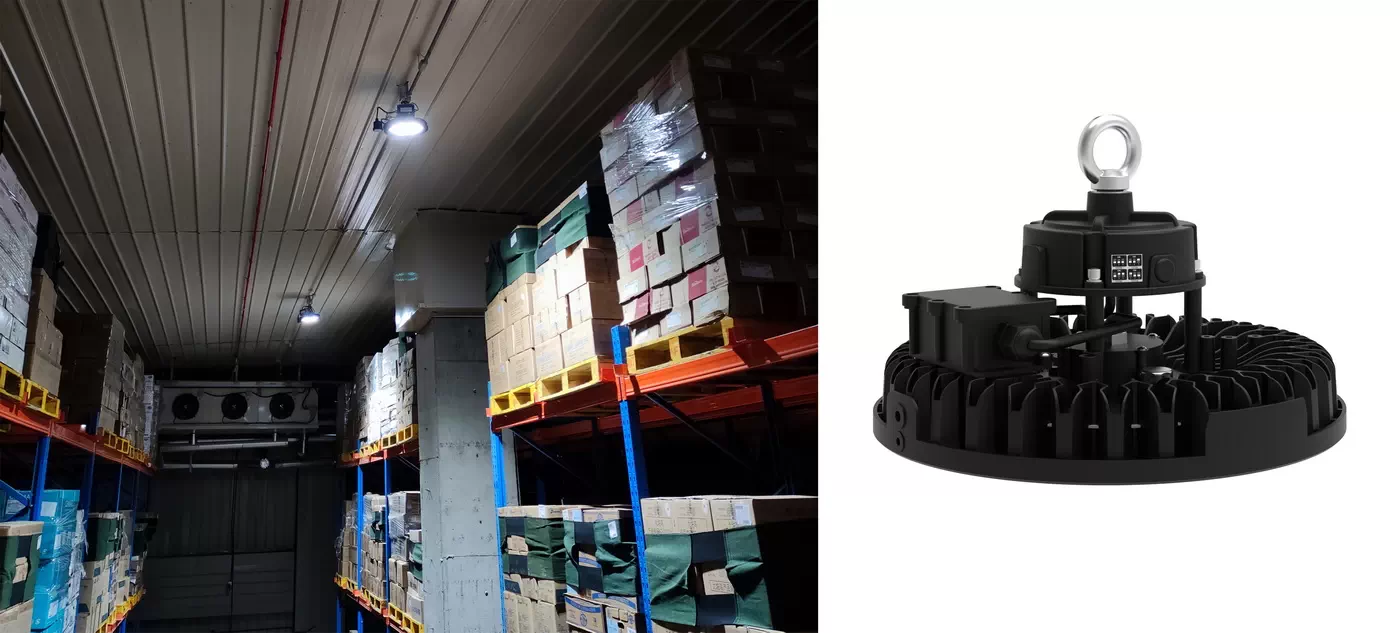
| Feature | Regular LED Light | LEDRHYTHM Cold Storage LED |
|---|---|---|
| Operating Temperature Range | Typically 0°C ~ 40°C | −40°C ~ 50°C or wider |
| Protection Rating | IP20 / IP44 | IP66 / IP69K or higher |
| Anti-condensation Design | None | Fully sealed / epoxy encapsulated |
| Housing Material | Standard plastic or aluminum | High-strength aluminum alloy / PC |
| Impact Resistance | Weak | Strong (IK10) |
| Food Safety Certification | Usually none | Optional / available |
| Lifespan in Cold Environment | Shortened rapidly in freezer | 50,000+ hours (at rated low temp) |
Conclusion
Temperatures as low as -40°C to -20°C can cause LED drivers to fail, and inferior LED chips, casings, and other materials will quickly break down and light quality will deteriorate in low-temperature environments. To ensure safety and long-term stability, choosing professionally designed walk in cooler LED lighting fixtures is crucial. Please contact us anytime for professional lighting support.
My walk-in cooler is only around 0°C, do I still need professional LED lights?
Absolutely necessary. While 0°C isn’t extremely low, it still experiences condensation from the frequent temperature fluctuations in walk-in cooler, eventually leading to rapid failure due to short circuits and corrosion. High-strength materials, structures, and high protection levels are crucial.
Does low-temperature environment affect the lifespan and brightness of LEDs?
Low temperatures can extend the lifespan of LED chips and stabilize their brightness, but the driving power supply and sealing structure of ordinary LED lights cannot withstand the damage caused by low temperatures and condensation, resulting in the entire lamp dim, flickering, and premature failure. Professional cold storage LED lights, on the other hand, ensure the stability of the overall performance of the fixtures through low temperature resistant driving and all-round sealing.
What materials should be chosen for lampshade and housing of LED lights for walk in freezer?
We recommend the ADC12 die-cast aluminum alloy housing with top-grade surface treatment and high-strength, impact-resistant PC. These not only offer excellent corrosion resistance and heat dissipation but also boast high structural strength, easily handling the low temperatures of walk-in freezers.

